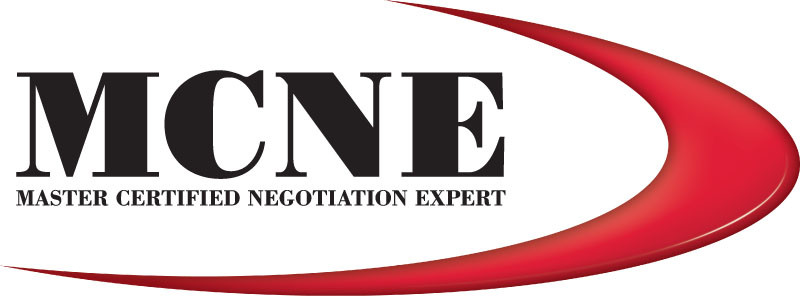In the past, we have had over 30,000 Active licenses. At the End of 2023 here is where we stand. Data is sourced from the Utah Division of Real Estate
22, 853 Active Licensees
Sales Agent – 18,517
Principal Broker – 2442
Branch Broker – 171
Inactive – 4016
In recent years, Utah’s real estate landscape has undergone a remarkable transformation, reshaping the profession in profound ways. This article delves into the evolution of the real estate sector in the Beehive State, meticulously analyzing the shift in professional roles, market dynamics, and regulatory frameworks from historical perspectives to current statistics. By examining these pivotal changes, we aim to provide a comprehensive overview of how Utah’s real estate profession has adapted to meet the changing needs and challenges of the market, offering valuable insights for professionals and stakeholders alike.
Key Legislative And Technological Changes Influencing Utah’s Realty Sector
Over the years, Utah’s real estate profession has undergone significant transformations, driven in part by key legislative and technological changes. Legislative reforms, particularly those surrounding licensing, continuing education requirements, and property transaction procedures, have reshaped the landscape for real estate professionals in Utah. These changes aimed to standardize the quality and reliability of services provided by real estate agents and brokers, thereby protecting consumers and ensuring a more transparent market. Furthermore, legislation related to zoning and land use has profoundly impacted development trends and investment focuses within the state, influencing the types of properties that are in demand and thereby shaping the market dynamics that real estate professionals navigate.
On the technological front, the integration of digital tools and platforms into the real estate process has revolutionized the way properties are marketed, sold, and managed in Utah. Online listings, virtual tours, and digital transaction platforms have expanded the reach of real estate professionals, enabling them to connect with a broader audience of buyers and sellers more efficiently than ever before. These technological advancements have also facilitated more detailed market analysis and trend tracking, allowing agents and brokers to offer more informed advice to their clients. Consequently, real estate professionals in Utah must now possess a dual fluency in both the traditional aspects of their trade and the rapidly evolving digital landscape to stay competitive and successful.
Historical Overview Of The Utah Real Estate Market
The Utah real estate market has witnessed substantial transformation over recent decades, marked significantly by changes in demographic trends, economic conditions, and regulatory landscapes. In the past, the market was characterized by a relatively small pool of real estate professionals, a consequence not only of Utah’s smaller population but also of a less dynamic economic environment that demanded fewer transactions and thus, less professional involvement. Additionally, the pre-digital age meant that the barriers to entry in the real estate profession were notably higher, requiring more direct, local knowledge and networking to achieve success. This era also saw a market less influenced by national and international economic shifts, with property values and demand more directly tied to local economic factors such as employment rates in key industries.
Transitioning into the current era, the evolution of the Utah real estate market is remarkable. The advent of digital technology has revolutionized how real estate transactions are conducted, making the market more accessible to a broader audience and lowering the barriers to entering the profession. This technological leap, combined with Utah’s booming population and economic growth, has expanded the pool of real estate professionals significantly. Today, the market is more dynamic, with a higher rate of transactions fueled by both local and out-of-state buyers attracted by Utah’s vibrant economy, quality of life, and natural beauty. Additionally, regulatory changes have streamlined many processes, further attracting new entrants into the profession. This shift has not only increased the competitiveness among real estate professionals but has also necessitated a higher degree of specialization and professionalism in the field, reflecting the growing complexity and diversity of the Utah real estate market itself.
Analyzing Current Trends And Statistics In Utah’s Real Estate Profession
Delving into the current trends and statistics in Utah’s real estate market, it becomes apparent that the sector has seen noteworthy shifts. Initially, the surge in demand observed over the recent years has significantly impacted both the pricing and availability of properties across the state. According to the latest figures, Utah’s median home price has seen an increase of over 20% when compared to the previous year. This price adjustment is largely attributed to the influx of new residents moving to the state, attracted by its vibrant economy and quality of life. Furthermore, the inventory of available homes has struggled to keep pace with this growing demand, creating a competitive market environment for buyers.
Moreover, the composition of the real estate profession in Utah has evolved alongside these market changes. The number of licensed real estate agents in the state has grown exponentially, driven by the potential for lucrative earnings in a booming market. However, this increase in professionals has also led to heightened competition among agents, pushing them to adopt innovative strategies to stand out. The adoption of digital marketing tools, virtual home tours, and advanced data analytics for market predictions are just a few examples of how the profession is adapting to the modern digital era. This technological adoption not only enhances the buying and selling experience for clients but also equips agents with more precise tools for market analysis and forecasting, a crucial aspect in today’s rapidly changing real estate landscape.
The Future Outlook For Real Estate Professionals In Utah
In projecting the future outlook for real estate professionals in Utah, it’s essential to consider the evolving dynamics of the market and the broader economic indicators that influence housing demand. Over the past few years, Utah has experienced a significant influx of new residents, fueled by its appealing job market, stunning landscapes, and a high quality of life. This population increase has led to a surge in demand for housing, pushing property values upward and creating abundant opportunities for real estate professionals. However, as the market adjusts to these changes, professionals must adapt their strategies to stay ahead. The increase in competition, not just among real estate agents but also with the advent of digital real estate services, requires a focus on specialization, customer service, and embracing technology to enhance buying and selling experiences.
Looking forward, the technology’s integration into the real estate process is expected to deepen, with virtual reality tours, AI-driven property matching, and blockchain-enabled transactions becoming more commonplace. These advancements promise to streamline the buying and selling process but also pose a challenge for professionals to continuously update their skills and offerings. Moreover, with environmental concerns and sustainability becoming increasingly important to buyers, professionals in Utah’s real estate sector will need to prioritize these factors in their listings and advice to clients. As the state’s urban and rural landscapes continue to evolve, real estate professionals who can balance traditional values with innovative approaches are likely to thrive. Given Utah’s strong economic fundamentals and the potential for further growth, the real estate profession in the state looks poised for a vibrant future, albeit one that will require adaptation and forward-thinking to navigate successfully.
In conclusion, the evolution of Utah’s real estate profession reflects a dynamic interplay between legislative evolution, technological innovation, and market forces. As we’ve explored, from its historical roots to the present day, the sector has witnessed significant shifts, underpinned by key legislative and technological changes that have reshaped the landscape for professionals. Current trends and statistics reveal a profession in transformation, adapting to new challenges and opportunities. Looking towards the future, real estate professionals in Utah are poised to navigate this evolving market landscape, armed with insights from the past and present, and an eye on emerging trends. As the profession continues to adapt and grow, the resilience and adaptability of real estate professionals will remain pivotal in driving the sector forward in the years to come.
As principal broker of Utah Realty™, I feel honored to serve the Utah real estate community as one of just 2442 in Utah.
How do we compare the rest of the country? (Estimates Only)
| Florida |
220,309 |
| California |
194,964 |
| Texas |
147,549 |
| New York |
61,323 |
| New Jersey |
58,472 |
| Arizona |
52,848 |
| North Carolina |
52,571 |
| Illinois |
48,812 |
| Georgia |
45,125 |
| Pennsylvania |
38,174 |
| Ohio |
35,755 |
| Tennessee |
34,714 |
| Michigan |
34,684 |
| Virginia |
34,228 |
| Colorado |
26,365 |
| Missouri |
25,399 |
| Maryland |
25,355 |
| South Carolina |
25,145 |
| Massachusetts |
24,637 |
| Minnesota |
21,473 |
| Indiana |
20,548 |
| Washington |
20,375 |
| Utah |
19,281 |
| Nevada |
18,902 |
| Connecticut |
18,847 |
| Alabama |
18,162 |
| Oregon |
17,524 |
| Wisconsin |
16,170 |
| Louisiana |
15,753 |
| Oklahoma |
13,407 |
| Kentucky |
12,755 |
| Idaho |
11,292 |
| Arkansas |
11,003 |
| Hawaii |
10,089 |
| Kansas |
10,035 |
| Iowa |
7,940 |
| Mississippi |
7,462 |
| New Mexico |
7,345 |
| New Hampshire |
6,414 |
| Montana |
5,625 |
| Maine |
5,607 |
| Nebraska |
5,394 |
| Rhode Island |
5,263 |
| Delaware |
4,220 |
| West Virginia |
3,346 |
| District Of Columbia |
2,584 |
| Wyoming |
2,550 |
| South Dakota |
2,216 |
| North Dakota |
2,008 |
| Alaska |
1,882 |
| Vermont |
1,749 |
| Puerto Rico |
1,237 |
| Guam |
570 |
| Virgin Islands |
380 |
![11 Must-Do Actions To Ensure A Smooth Transition Into Your New Residence]()
 11 Must-Do Actions To Ensure A Smooth Transition Into Your New Residence
11 Must-Do Actions To Ensure A Smooth Transition Into Your New Residence
Moving into a new residence marks a significant milestone that brims with excitement and potential. However, to translate this new beginning into a seamless transition, careful planning and a series of deliberate actions are quintessential. In this article, we delve into 11 crucial steps aimed at streamlining your move, ensuring that every aspect of your relocation is meticulously organized and executed. From pre-move preparations to settling-in strategies, these insights are designed to minimize disruptions and set a solid foundation for a comfortable and efficient transition into your new home.
Organizing Essential Utilities And Services
Before setting foot in your new home, a crucial step to ensuring a smooth transition involves organizing essential utilities and services. This process includes transferring or initiating services such as electricity, gas, water, internet, and possibly security system monitoring. It’s advisable to contact these service providers at least two to three weeks in advance of your move. By doing so, you can guarantee that all necessary utilities are operational from day one in your new residence. Furthermore, this proactive approach allows you to compare plans and rates, potentially uncovering cost-effective options that align with your budget and lifestyle needs. Remember, scheduling installations or service switches in advance also helps in avoiding any unexpected delays, ensuring that your move is as seamless as possible.
Additionally, it is paramount to update your address with relevant institutions and service providers, including banks, insurance companies, and subscription services, to ensure a continuous and uninterrupted flow of services and communications. Consulting with the previous occupants or the property management can provide valuable insights into which services and providers offer the best connectivity and reliability in your new area. They may also suggest local amenities and service professionals for tasks such as landscaping or house cleaning, further easing your transition. By systematically addressing these utilities and services ahead of time, you not only secure the functionality of your new home but also forge a pathway for a stress-free and comfortable resettlement.
Establishing A Strategic Moving Plan
Starting with a strategic moving plan is imperative to guarantee a seamless transition into your new residence. It begins with selecting the optimal moving date, which often hinges on personal schedules, job obligations, or the academic calendar if children are involved. Once a date is set, creating a comprehensive to-do list that encompasses all the necessary steps—ranging from hiring movers or renting a truck, to transferring utilities and updating addresses—ensures nothing falls through the cracks. This list should ideally be segmented by timeline, with tasks categorized as immediate (to be done now), short-term (to be done within the next month), and long-term (to be completed before the move). Such meticulous planning not only promotes efficiency but also significantly reduces the stress associated with relocation.
Furthermore, thoroughly researching and selecting the right moving company is a crucial step in your strategic moving plan. Look for companies with outstanding reviews, appropriate licenses, and insurance to protect your belongings. It’s also beneficial to obtain multiple estimates to ensure competitive pricing. Meanwhile, for those opting to move independently, securing the necessary equipment and understanding rental policies is key. Beyond logistics, a well-thought-out budget that accounts for all moving expenses—unexpected and expected—is vital. This financial plan should include packing supplies, mover or rental truck fees, and any immediate home improvements needed in the new residence. By addressing these aspects early on, you are setting a solid foundation for not just a successful move, but also for the peaceful enjoyment of your new home from day one.
Securing Your New Home: Safety And Maintenance Checks
When preparing for a move, a paramount consideration should be the security and maintenance of your new home. Prior to settling in, conducting a comprehensive inspection of the property is crucial. Start with a security assessment, ensuring all locks on doors and windows operate effectively and replacing any that do not. This might also be an opportune moment to consider upgrading to smart locks for enhanced security and convenience. Additionally, installing a security system or checking if one already exists and is functioning properly can provide peace of mind. It’s also advisable to familiarize yourself with the local emergency services and their contact information, positioning you to react swiftly in any unexpected situations.
Beyond security, a thorough review of the house’s maintenance status is indispensable. This involves checking the electrical system, including outlets and circuit breakers, to confirm they are in good working order and meet your needs. Inspect the HVAC system to ensure it’s functioning efficiently, as this will impact your comfort and potentially your utility bills. Plumbing should also be examined for any signs of leaks or old fixtures that might need replacing to prevent water damage. If possible, consider hiring professionals to conduct these inspections, as their expertise can uncover issues that may not be immediately apparent. Addressing these items before moving in can significantly reduce the risk of inconvenient or costly repairs down the line, setting the stage for a smooth transition into your new residence.
Navigating Your New Neighborhood: Integration And Exploration
Successfully relocating to a new residence involves more than just moving your belongings; it also requires integrating into your new community and exploring your surroundings. A fundamental step to achieving this is to familiarize yourself with the essential amenities and services in your area. Take the time to locate the nearest grocery stores, pharmacies, hospitals, parks, and public transportation options. This not only makes your daily life more convenient but also helps in emergencies. Additionally, understanding local laws and regulations, such as recycling policies or parking rules, can prevent unnecessary stress and fines, ensuring a smoother transition.
Engaging with your new neighborhood also means embracing opportunities to connect with people. Consider joining local organizations or social groups that align with your interests or volunteering for community service. These activities are not only beneficial for networking and making friends but also for understanding the cultural and social dynamics of your new area. Furthermore, participating in local events and festivals can enrich your experience and foster a sense of belonging. Exploring local businesses, such as restaurants and shops, supports the economy and helps you discover the unique flavors and products of your community. These steps towards integration and exploration are crucial for building a comfortable and fulfilling life in your new residence.
In conclusion, moving into a new residence demands a strategic approach that encompasses organizing essential utilities and services, establishing a solid moving plan, ensuring the safety and maintenance of your new home, and finally, integrating and exploring your new neighborhood. By diligently following these must-do actions, you are setting the stage for a smooth and successful transition. Remember, the effort and organization you invest upfront can significantly minimize the challenges and stress often associated with relocating. Embrace this opportunity to create a comfortable and secure environment in your new residence, fostering a sense of belonging and community from day one.




















 11 Must-Do Actions To Ensure A Smooth Transition Into Your New Residence
11 Must-Do Actions To Ensure A Smooth Transition Into Your New Residence